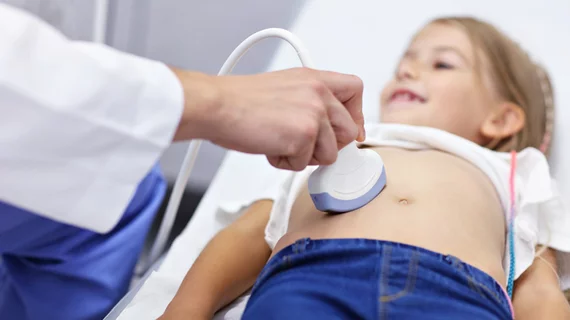Widespread variation in pediatric radiology delivery underlines ‘pressing need’ to ensure comparable quality
Widespread variation in how hospitals deliver pediatric radiology services—particularly on nights and weekends—underlines a “pressing need” to ensure patients are receiving high-quality care, regardless of the setup.
That’s according to new survey data from dozens of United States academic medical centers, published Tuesday in the Journal of the American College of Radiology. Polling 42 freestanding pediatric hospitals, researchers found some stark differences depending on when patients received their care.
While an attending radiologist was involved in initial imaging reports 100% of the time during the day, the number dropped to 69% on weekends and 33% overnight. Nearly 27% used only rad residents without attending oversight on weekends, which leapt to more than 38% during the graveyard shift.
“Although the approach taken by individual hospitals must be pragmatic and consider their specific circumstances, the lack of a single established standard of care suggests the pressing need to ensure all models deliver comparable quality to all patients, regardless of when they present to the ED,” contributing author and noted radiologist Howard Forman, MD, MBA, with Yale’s Department of Radiology, and co-authors from three other institutions wrote May 11. “Future studies should investigate the implications for these different staffing models in delivering comparable standards of patient care.”
Interviewers conducted the anonymous, 12-item survey over the phone in 2019’s first half, targeting 47 hospitals with an 89% response rate. Along with using residents, about 2% of pediatric providers tapped teleradiologists as fill-ins over weekends, while 29% did so overnight. All survey respondents said they attempt to finalize radiology reports as soon as possible on weekdays, but that number dropped to 52% and 79% during overnights and weekends, respectively, the authors found.
“In conclusion, for daytime radiology staffing, coverage was consistent with the general expectation that attending radiologists should be working actively on site, supervising their junior colleagues and providing prompt final reports. Overnight and weekend results suggest, however, that there is no dominant model for radiology staffing,” the team wrote. “Although previous reports suggested a shift toward the 24-7 in-house attending radiologist model, our results indicate that resident radiologist cover and teleradiology remain popular staffing models, and that there is no significant correlation between staffing models and institution size.”
Read more of their findings in JACR here.

